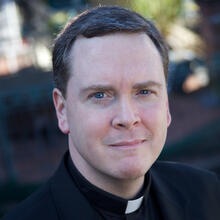The distance from Stone Mountain, Ga., to the Jimmy Carter Presidential Center in Atlanta is approximately 15 miles, or about 150 years. If you’re ever in that neck of the woods, as I was this summer, I suggest that you see both sites on the same day. For one thing, the road between them meanders through some lovely country, the sort of hazy, idyllic charm a New Englander like me expects to find during August in the Deep South. More important, though, the journey from Stone Mountain, with its mammoth carved memorial to the leaders of the Confederacy, and the Carter Center, with its living commitment to peace and reconciliation, is a journey through the lights and shadows of American history: from Lee, Jackson and Davis to Carter, King and Mandela.
My own trip was especially poignant because this summer marked the 50th anniversary of the March on Washington, that seminal gathering on the National Mall that at last awoke the conscience of this country and confirmed Dr. Martin Luther King Jr. as the moral leader of his time. Stone Mountain, in fact, is one of the places Dr. King mentioned specifically in his speech: “And if America is to be a great nation this must become true,” he said. “So let freedom ring from the prodigious hilltops of New Hampshire. Let freedom ring from the mighty mountains of New York. Let freedom ring from the heightening Alleghenies of Pennsylvania. Let freedom ring from the snowcapped Rockies of Colorado. Let freedom ring from the curvaceous slopes of California. But not only that. Let freedom ring from Stone Mountain of Georgia.”
If you look carefully at the newsreel footage of the March, you might be able to pick out an elderly, bespectacled, white Catholic cleric standing a couple of dozen feet behind Dr. King. That cleric is actually a Jesuit, the sixth editor in chief of America, John LaFarge. On that day in 1963, from the steps of the Lincoln Memorial, Father LaFarge witnessed the culmination of his lifelong efforts for racial reconciliation. When he returned to New York, just three months before he died at the age of 83, Father LaFarge described in these pages what he saw as Dr. King spoke his immortal words:
In the view of...the veteran and deeply religious A. Philip Randolph, the nationwide March for Jobs and Freedom was no place for any note of violence and hate. And neither was in evidence during the entire program. It was as tranquil and inevitable as God’s providence itself, with the majesty and power of an apocalyptic vision. This was the only expression that occurred to my mind, as I gazed over the immense throng stretching all the way from the Lincoln Memorial to the distant Washington Monument—a humbly yet proudly rejoicing multitude of Negroes and whites, responding magically to speakers and singers alike.








